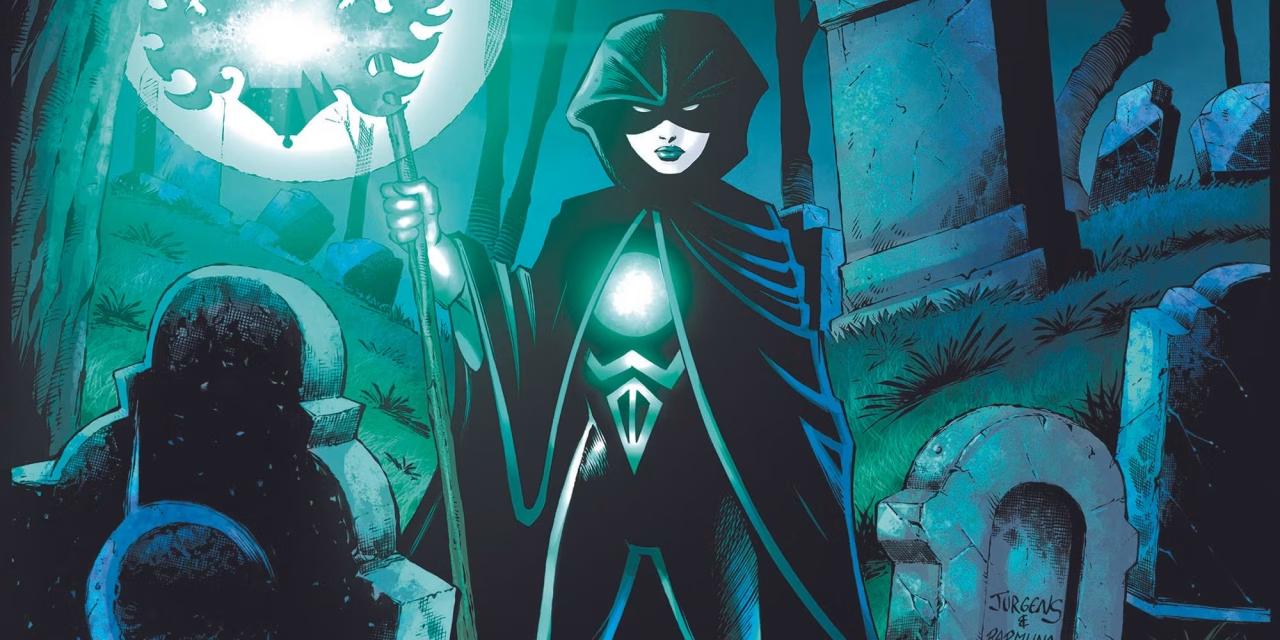DC’s Elseworlds hosts a gothic fear-fest set in the Tangent Universe.

DC Comics, reading the writing on the wall, has cracked open one of its more intriguing splinter universes—the Elseworlds imprint—for a fresh generation of readers. Though this latest tale unfolds within the Elseworlds banner—DC’s answer to Marvel’s What If…?—there’s something older and deeper in the marrow of Green Lantern: Dark #1. It has the feel of risk—creative risk—the kind rarely taken in the mainline titles, where pathos and peril are often muted by corporate safety nets.
Let’s be honest: DC has told some version of the same stories with the same characters for the better part of a century. But today’s readers? They’ve grown hungry for novelty, complexity, and emotional depth. Reviving the Elseworlds line isn’t just nostalgic—it’s necessary. It’s a chance to experiment, remix, deconstruct, and conjure something wholly new from familiar cloth. With Green Lantern: Dark, they’ve done just that.
This isn’t a case of recycling old names for modern headlines. This is Elseworlds with blood in its veins. DC has paired horror maestro Werther Dell’Edera (Something Is Killing the Children) with rising star Tate Brombal (House of Slaughter), two creators already known for weaving tales of loss, desperation, and monstrous transformation. Together, they’ve summoned a chilling reimagining of the Green Lantern mythos, steeped in the shadows of the Tangent Universe.
Gone is the Silver Age optimism. In its place: a world gone to rot, where magic—not reason, not science, not heroism—reigns supreme. The world is lost, ravaged by mystical catastrophe. The superheroes failed, not because they were weak, but because they never understood the rules of the war they were fighting. In their absence, only Rina Mori remains—the Tangent Universe’s witch-queen version of Green Lantern, a bearer not of willpower but of magical fire.
Here, the lantern isn’t a tool of science fiction; it’s a relic of ritual. The evil she faces? Not some costumed rogue or galactic dictator—but Solomon Grundy, reimagined as a primal, necromantic plague. Those touched by his magic rot into vessels of his undead will. Yes, it’s a zombie apocalypse in form, but not in spirit. Green Lantern: Dark is less about the horror of consumption than the sorrow of what remains after hope has been devoured.



And that’s the secret: this story isn’t compelling despite its zombie trope—it works because of its emotional stakes. Dell’Edera’s art doesn’t just depict a ruined world, it mourns it. Every panel trembles with loss. Every shadow whispers of failure, of heroes undone, of the fragile thread on which civilization once hung. Brombal’s script matches this mood, exploring not just the logistics of survival, but the psychic wound of a world that watched its icons fall.
Fans of Something is Killing the Children will find familiar resonance here. The same gothic flourishes. The same sense of aching dread. But where that series digs into childhood trauma, Green Lantern: Dark focuses on collective despair—and the impossible weight placed on the few remaining shoulders who refuse to give up the fight.
Rina Mori, as Green Lantern, is not the stoic protector of yesteryear. She’s something else: a living talisman. A last spark in a world smothered by ash. And as she stands against Grundy’s nightmarish tide, she revives the oath of her Golden Age predecessor, Alan Scott, with a renewed relevance that strikes like thunder:
“And I shall shed my light over dark evil, for the dark things cannot stand the light — the light of the Green Lantern.”
This isn’t just a good comic. It’s a necessary one. A reminder that, even when the old heroes fail, the light is never entirely gone. DC, in giving space to this kind of narrative, finally feels like it’s listening to readers again. The Elseworlds are back—and the darkness, for once, feels like the right place to begin.
![]()
Thaddeus Howze is an award-winning essayist, editor, and futurist exploring the crossroads of activism, sustainability, and human resilience. He's a columnist and assistant editor for SCIFI.radio and as the Answer-Man, he keeps his eye on the future of speculative fiction, pop-culture and modern technology. Thaddeus Howze is the author of two speculative works — ‘Hayward's Reach’ and ‘Broken Glass.’













You must be logged in to post a comment.